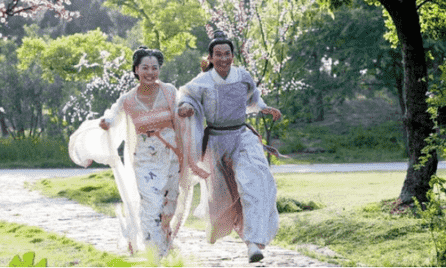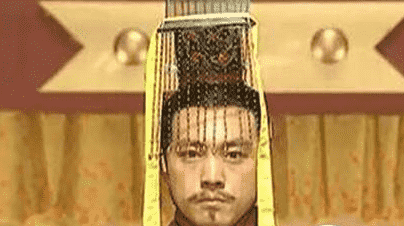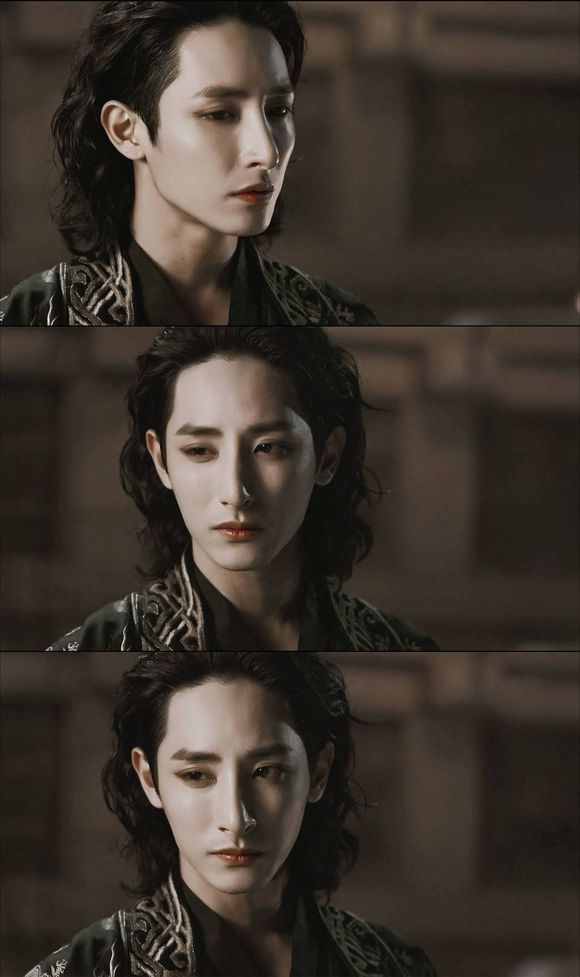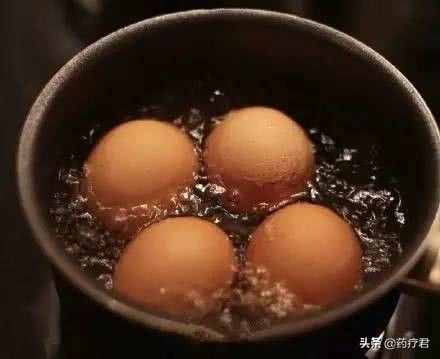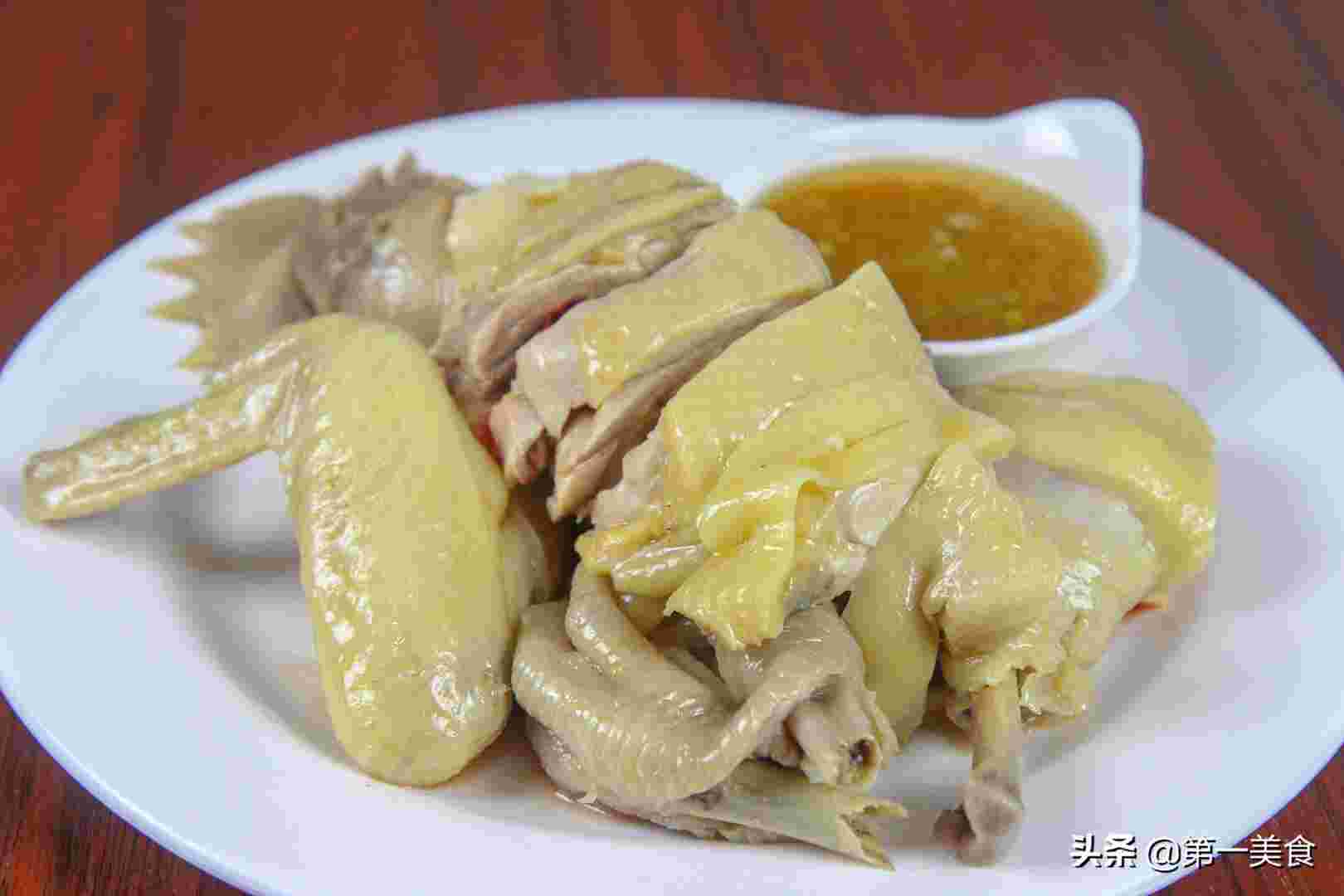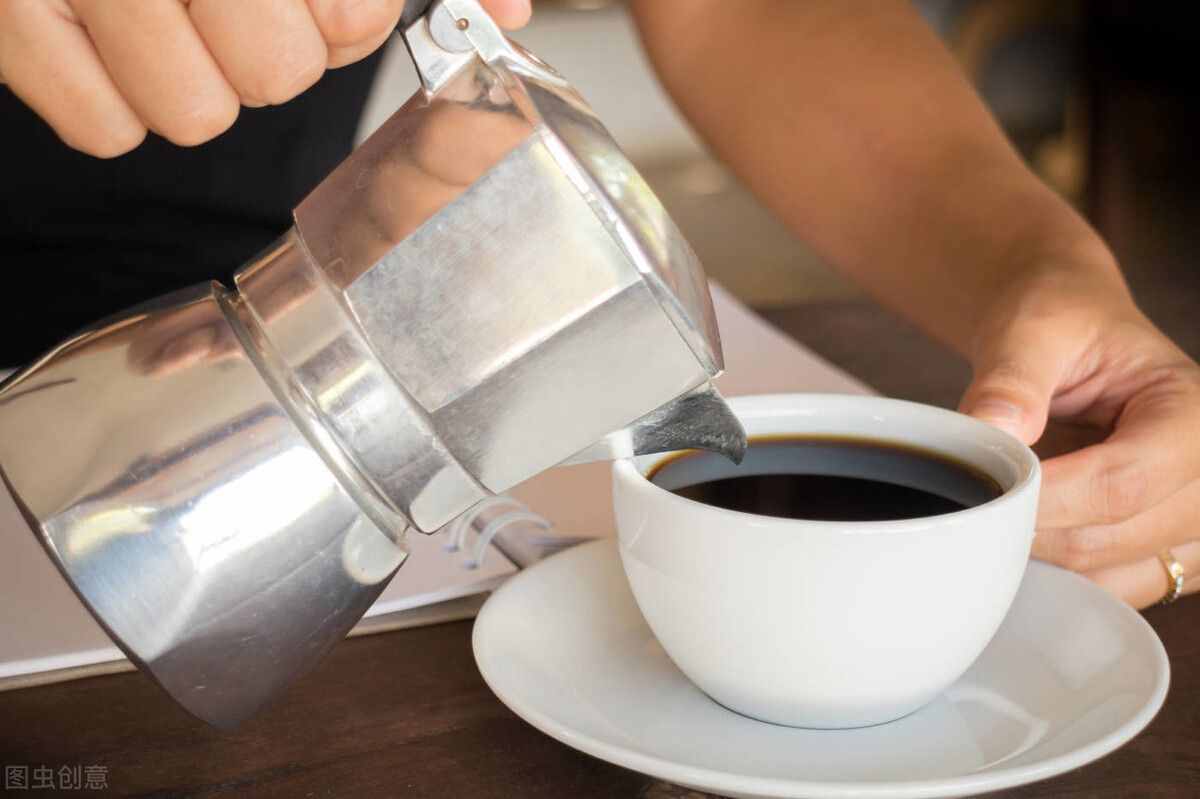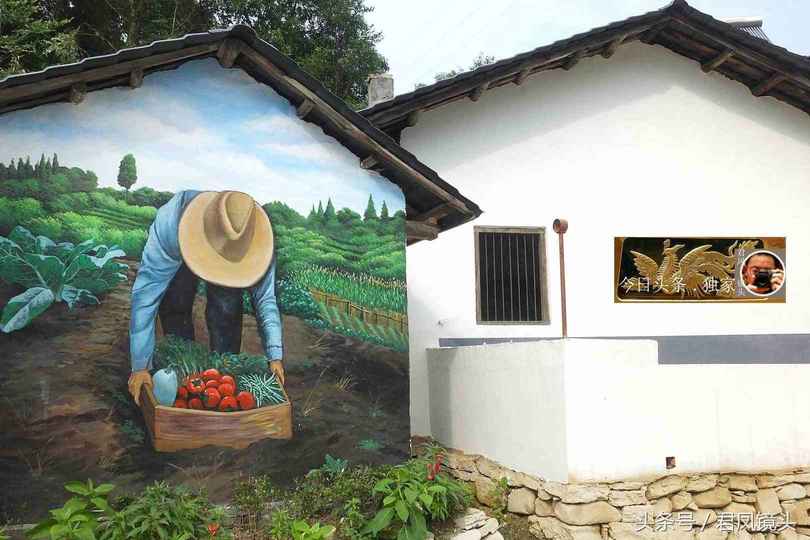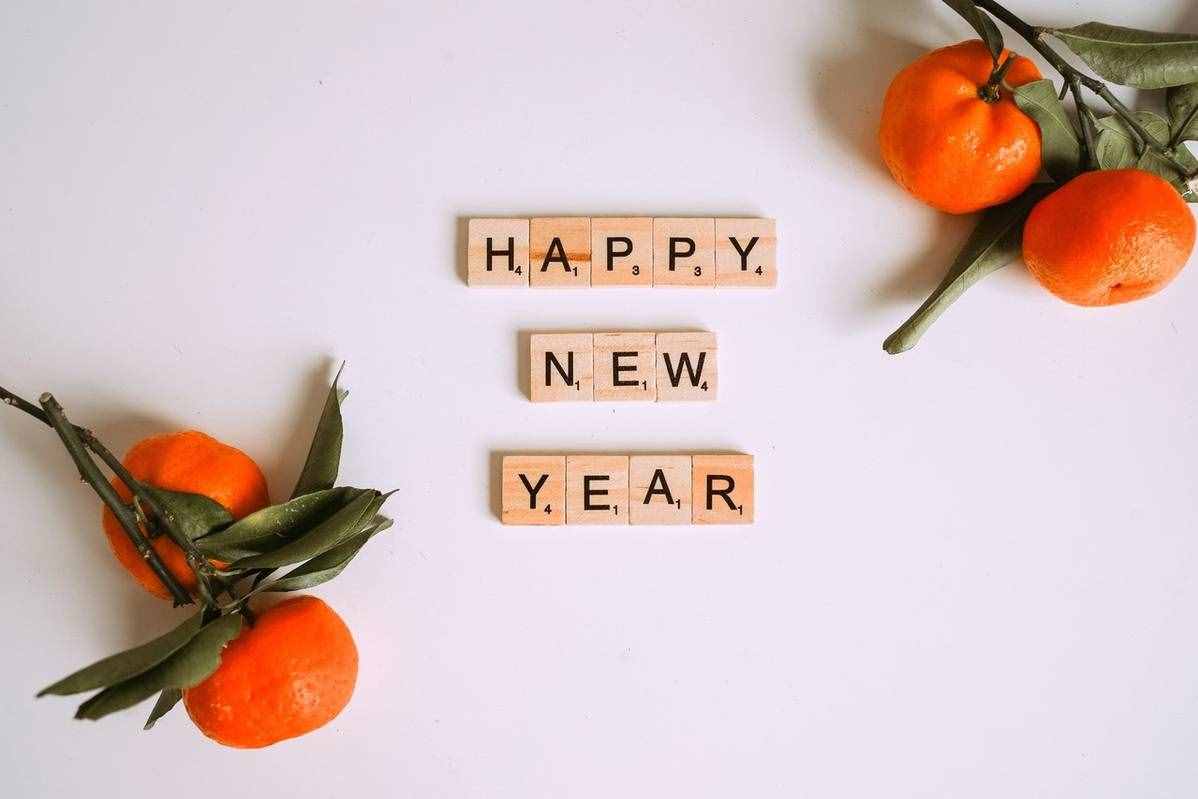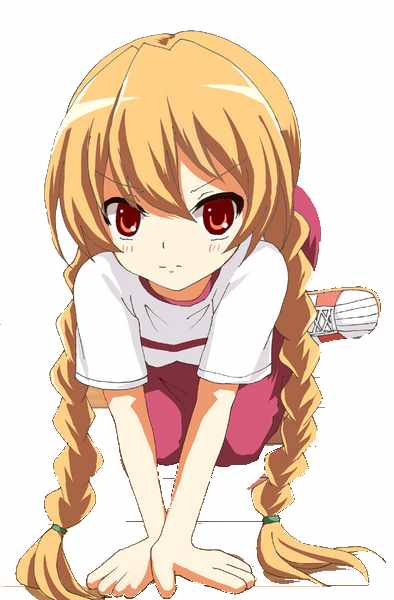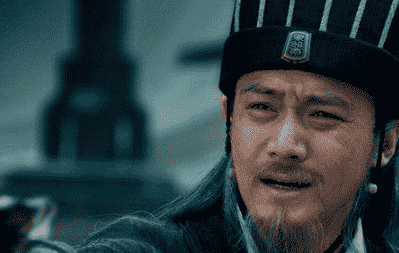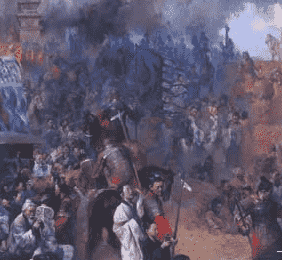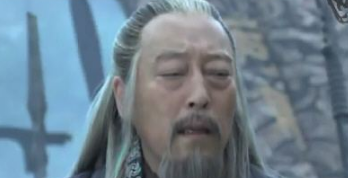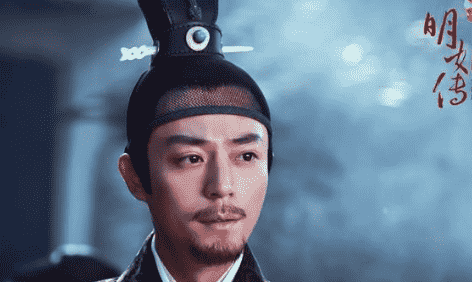古代食盒(古人的“便当盒”)
古代食盒(古人的“便当盒”)
“便当”一词起源于中国南宋时期的俗语,意思就是方便、便利。“便当”一词传入日本后,也曾写作“便道” “弁道”,最后采用了表示“准备”意思的和制汉字“弁”作为“便当盒”之意来使用。
Nowadays, many regular office workers prepare "bento box" lunch for themselves during workdays in China. The word "bento" originated from a Chinese word "便当(Biandang)" circulating during the Southern Song Dynasty (1127-1279)—meaning convenience, and later spread to Japan.
而鲜为人知的是,至迟在距今两千多年前的战国时期,中国人就已经用上了“便当盒”。
In fact, ancient Chinese started to use some sort of "bento boxes" in no later than the Warring States Period, over 2,000 years ago.
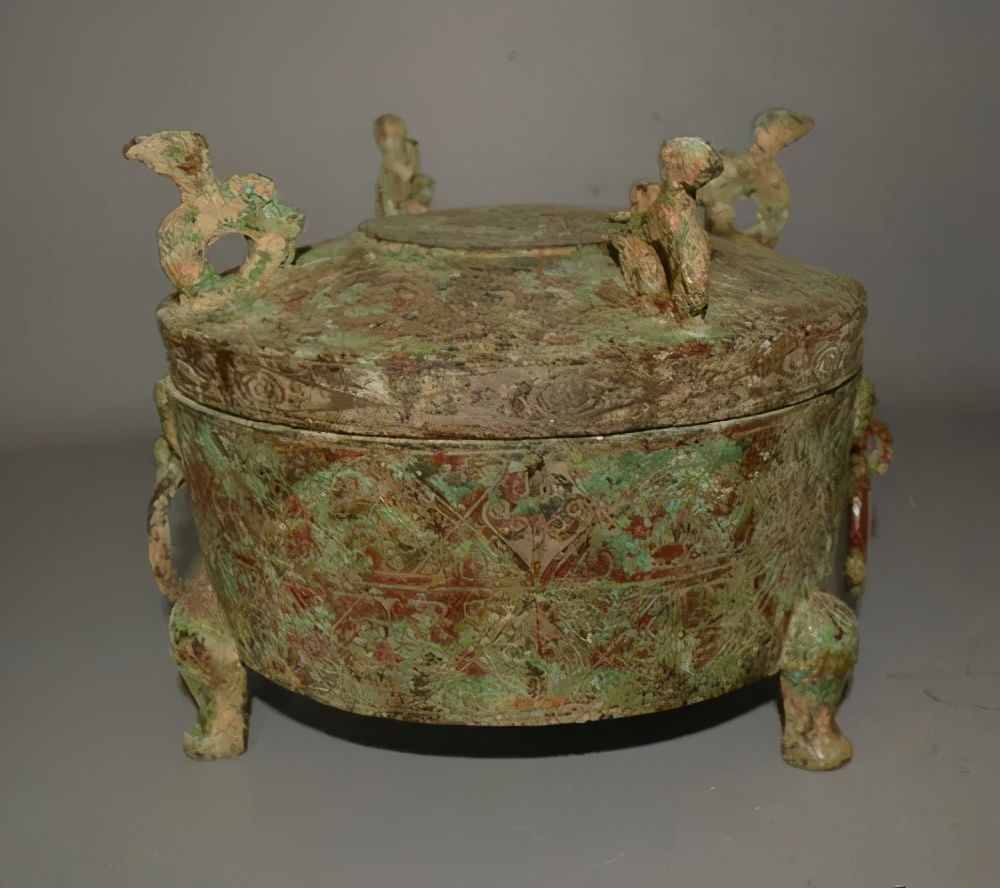
战国时期青铜器掐银丝瑞兽双耳三足食盒 Bronze tripodic food box ornamented with silver inlay and auspicious beast pattern, Warring States Period
古时候的“便当盒”,就是“食盒”,是盛装食物用的竹木结构器具,有底有盖,且内部最少有一层以上。
翻阅历史文献,可以发现历史上食盒的名称不拘于一,包括樏(léi)、箪、笥(sì)、攒盒、槅(gé)等。虽然叫法不同,但从功能看,均属于食盒的范畴。
Ancient food boxes were given assorted names in history but served similar functions.
到了明清时代,“食盒”这个词开始被广泛应用,不少文学作品当中对之都有相关记载。
In the olden days, "bento boxes" were food boxes bolstered by bamboo and wood from inside with a lid and a bottom. They were mentioned in several Chinese literary works, such as the classic Chinese novelJin Ping Mei(The Plum in the Golden Vase) andRulin waishi(The Unofficial History of the Scholars), written in the Ming and Qing dynasties respectively.
比如明代长篇白话世情小说《金瓶梅》第十四回:“西门庆听言大喜,即令来旺儿、玳安儿、来兴、平安四个小厮,两架食盒,把三千两金银先抬来家”;又如清代吴敬梓创作的长篇小说《儒林外史》第一回:“正存想间,只见远远的一个夯汉,挑了一担食盒来”。
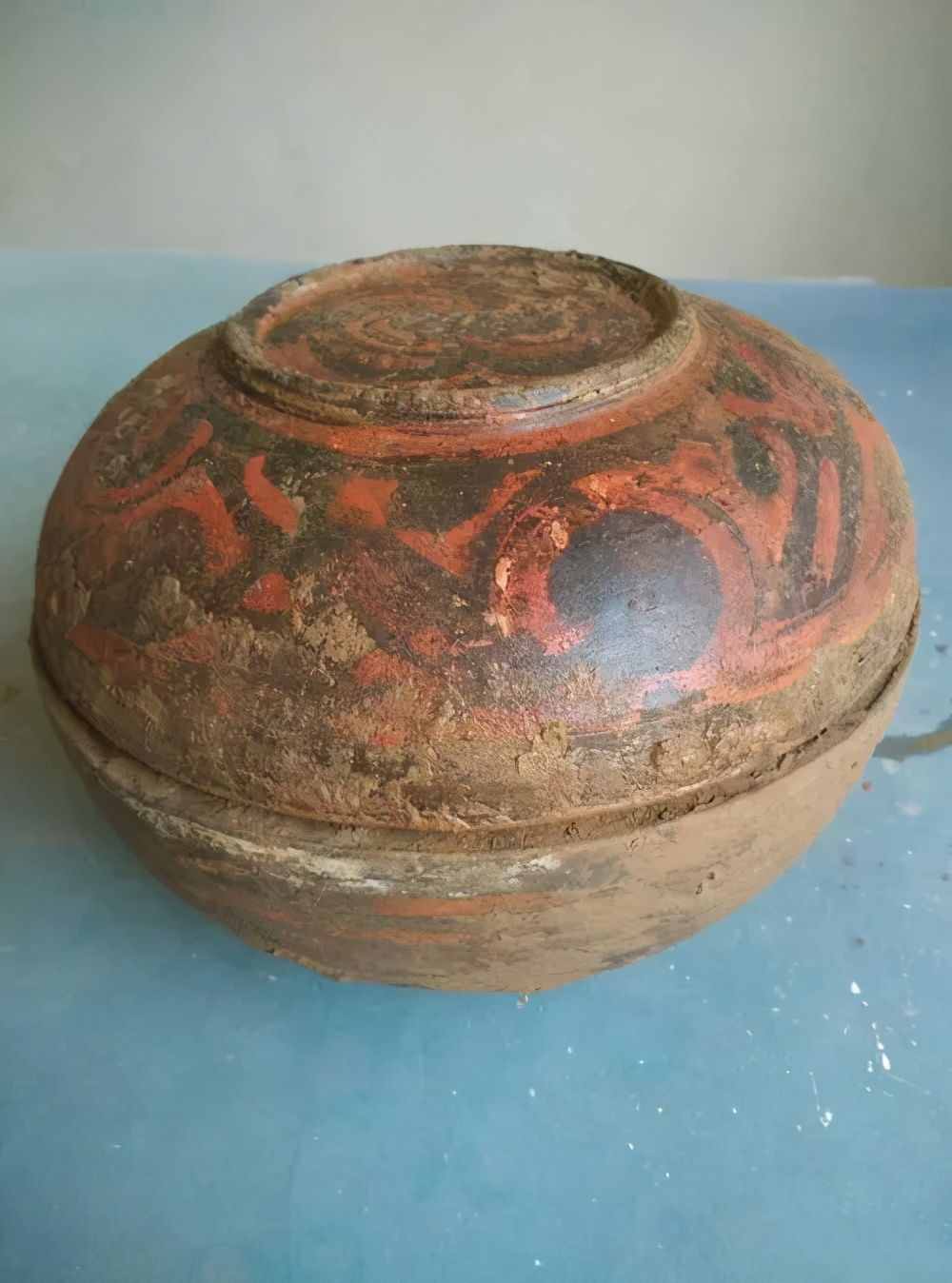
汉代彩绘食盒 Richly-colored food box, Han Dynasty
食盒的流行,和古代的“外卖”行业密切相关。
早在汉代,跟今天颇为相似的“外卖“行业便已诞生,不少社会名流都是“外卖”爱好者,而酒肆饭店用于运送熟食的器皿,便是食盒。
In as early as the Han Dynasty, the boom of takeaway service widely promoted the use of food containers by taverns and restaurants.
盒体的长宽大小不一,大者可达半人高,须由两人肩抬方能移动;小者如瓯(盆盂类瓦器),由一人捧着即可。
Sizes of ancient "bento boxes" varied. The bigger ones could be half tall as a man and took two people to carry, while the smaller ones could be readily held by just one person.
根据文献记载,唐宋时期食盒已得到广泛使用,在南宋画作《春游晚归图》(佚名)中,一个人物就挑着两层屉格的方形食盒,此画作甚是珍贵。
During the Tang and Song dynasties, food containers like today's food boxes were widely used, as depicted in one of the famous paintings in the Southern Song Dynasty displayed below.
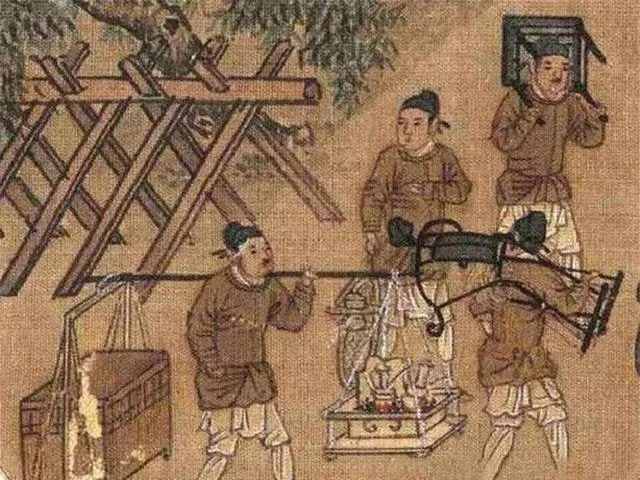
南宋《春游晚归图》中的食盒 Men carrying food box were depicted in an ancient painting in the Southern Song Dynasty.
因为食盒常承载着精美昂贵的食物,所以其制作工艺多为上乘。古代食盒有木、竹、珐琅等材质,其中又以木质居多,尤其是紫檀、黄花梨、鸡翅木、酸枝等纹理细密、色泽光润的硬木,坚固而有韧性,制成的食盒耐磕碰,又具有一定的重量,在挑、提的时候食物不易晃荡。
Usually, craftsmen would use exquisite materials to make boxes for delicate food, such as wood, bamboo and enamel, among which wood was mostly used, especially red sandalwood, Chinese rosewood, wenge, and santos rose wood. They were close-grained, bright-colored, and cast-iron enough to make good food boxes, and didn't weigh too much for one to shoulder or carry without waggle.
古代食盒的规制很多,按照使用方式大致可以分成提盒、捧盒、攒盒三种。
Ancient "bento boxes" could be roughly divided into three kinds: food boxes with handle, food boxes for holding and multi-grid food boxes.
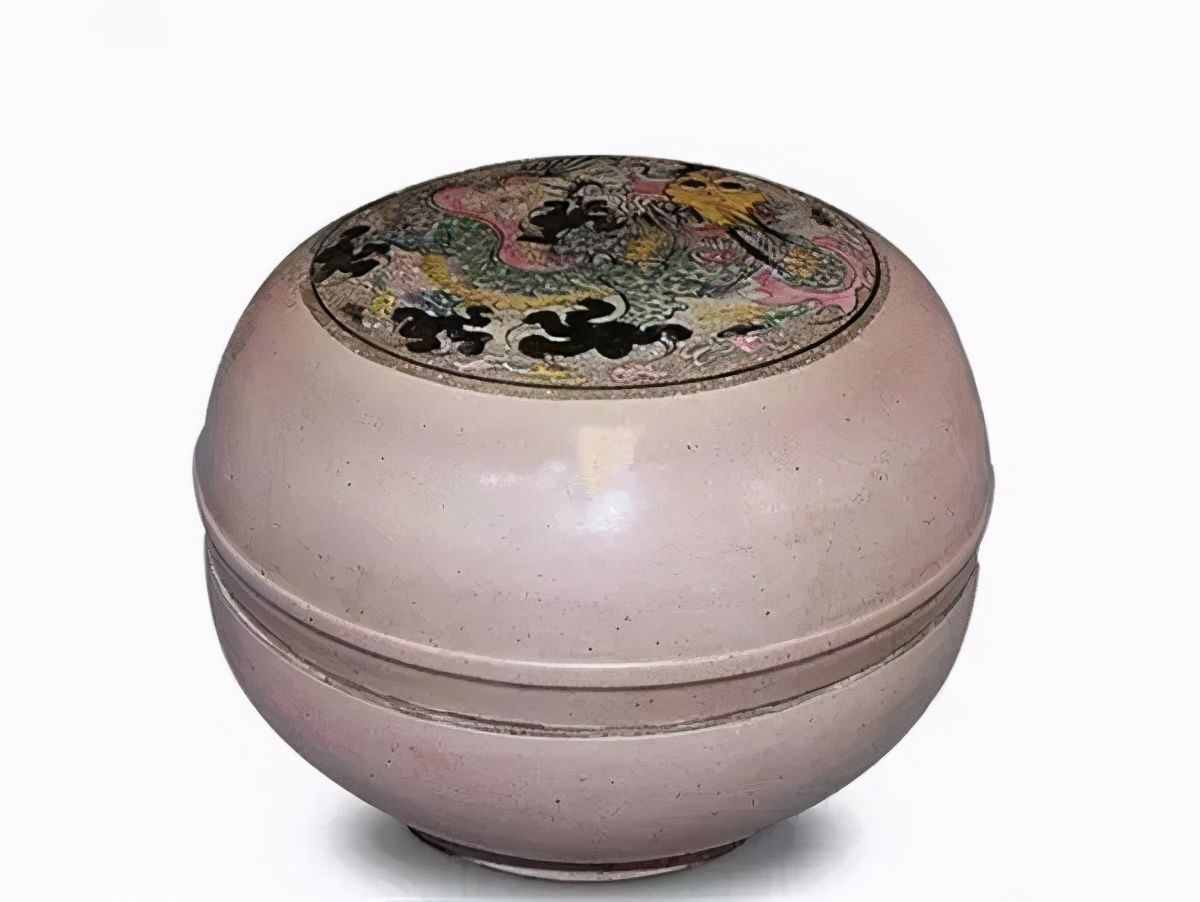
清雍正五彩龙凤瑞兽缠枝食盒 Five-colored food box inlaid with patterns of a dragon and a phoenix as well as auspicious beasts, during the reign of Emperor Yongzheng in the Qing Dynasty
提盒是古代送外卖时最常用的食盒,它有着对称的提梁托着盒子,虽然体型较大,但材质较轻,一只手就可以拎着带走。
The first kind was the most common one. With relatively larger size, the containers had symmetrical hoop handles and a light weight, so people could carry them with one hand only while walking.
提盒出现得较早,最初的提盒不过两根提梁,加几层格子,材质不是白木涂漆,就是竹编而成,都比较粗糙。直到宋代,一些文人对提盒产生了兴趣,也参与设计,于是提盒便成了一种透着文雅之气的厨房用具。
Food boxes with handle were coarse at first, until some literati participated in their design and changed them into "elegant" kitchen utensils in the Song Dynasty.
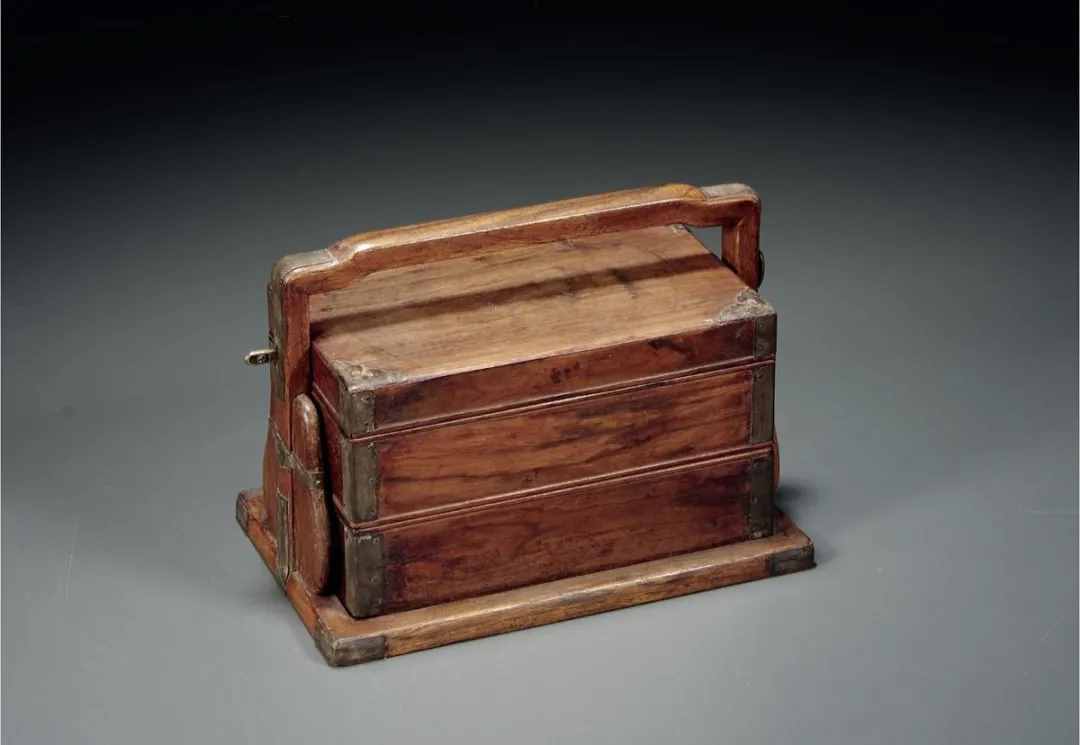
清代黄花梨提盒 Handled food box made of Chinese rosewood, Qing Dynasty
时至明清,提盒材质变得更加多样,甚至出现了雕漆或百宝嵌装饰。一些工艺价值极高的提盒已不用作盛放食物,而是作为贮藏玉石印章、小件文玩之具了。
During the Ming and Qing dynasties, food boxes with handles took on more styles, some decorated with carved lacquerware or inlaid with a variety of processed semi-precious materials. Some high-value boxes even became containers of jade and small articles for amusement rather than food.
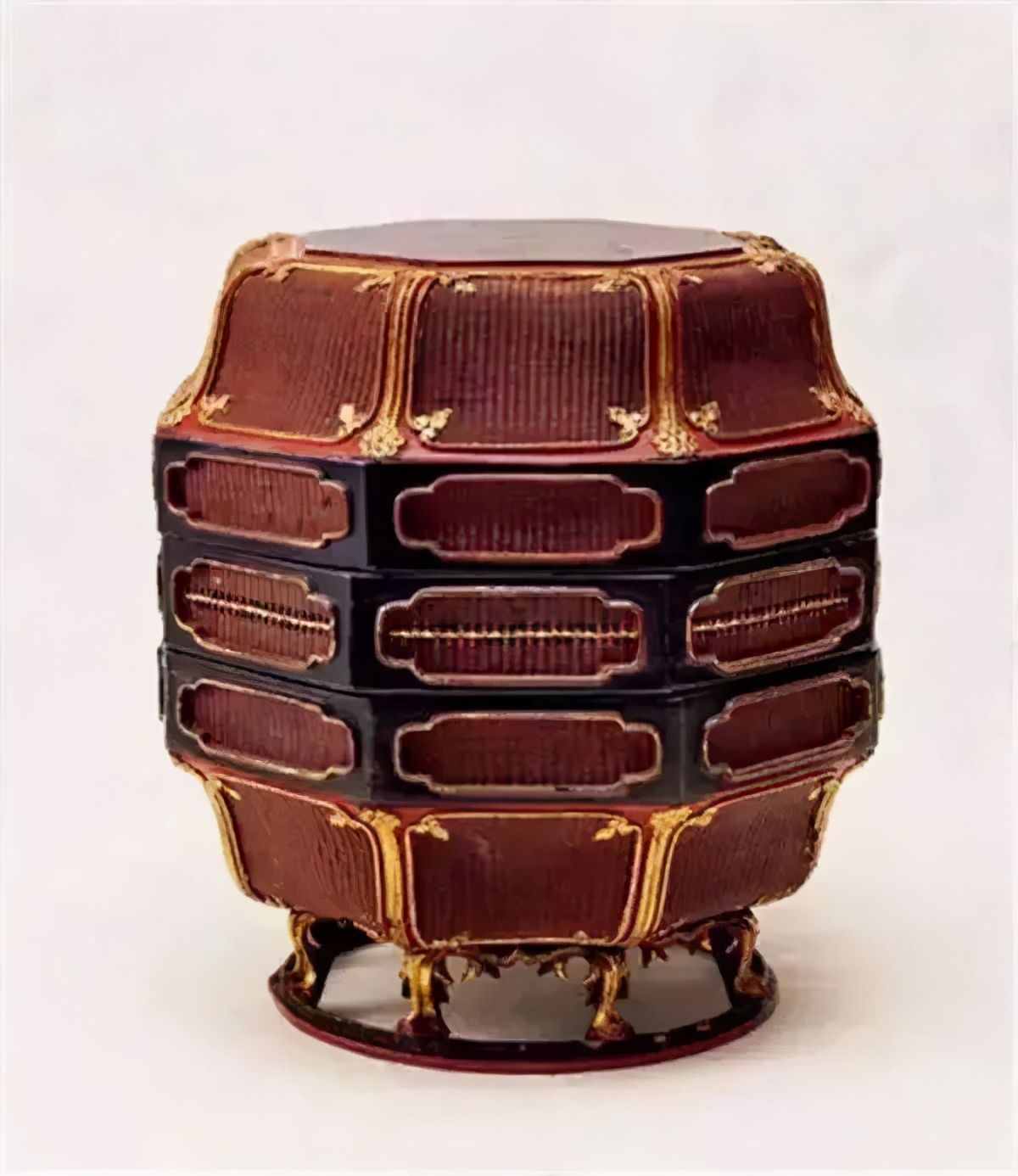
明崇祯竹篾髹(xiū)漆描金三撞八棱形食盒 Gilt octagonal food box made of bamboo, during the reign of Emperor Chongzhen in the Ming Dynasty
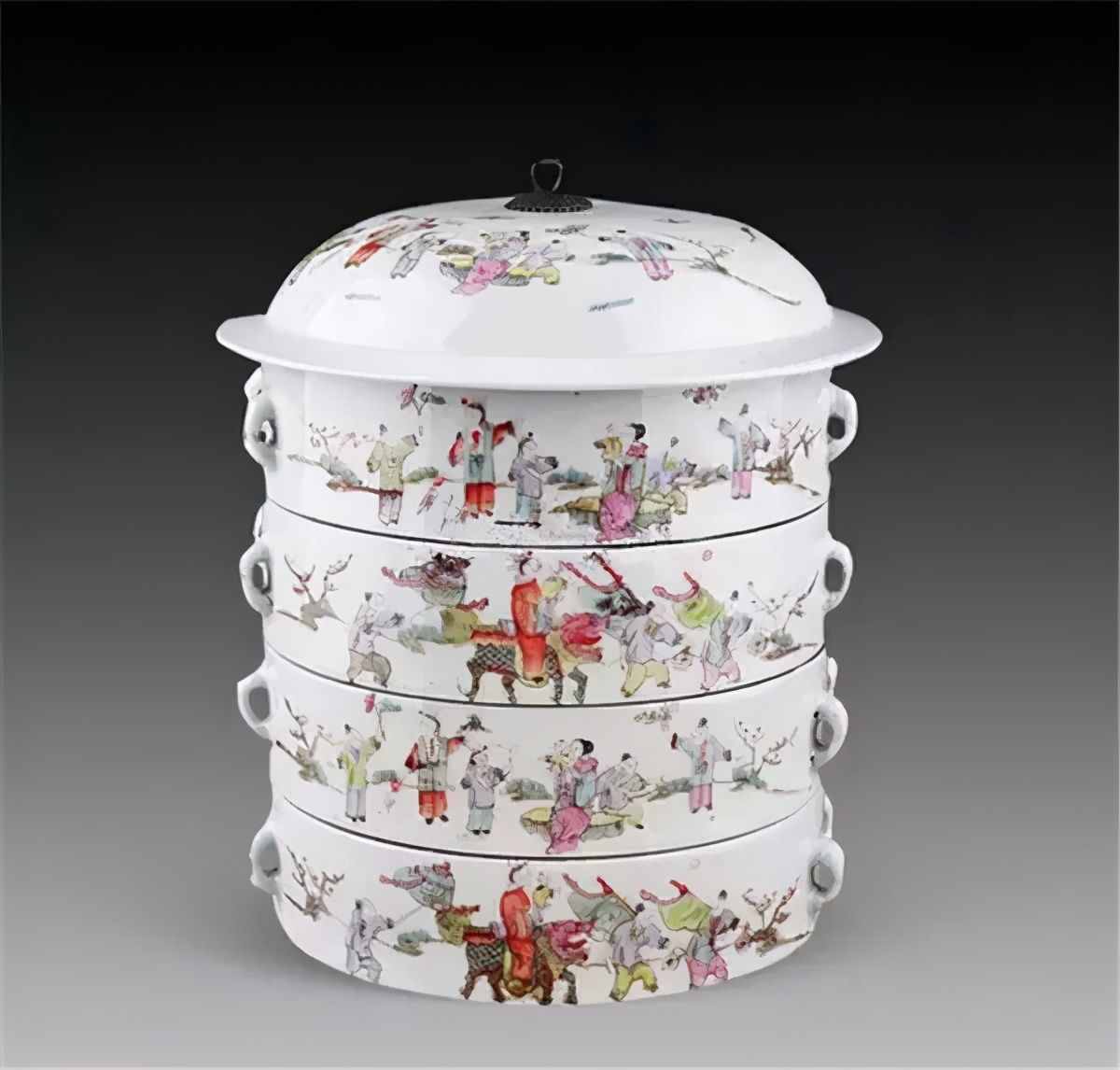
清代粉彩百子图食盒 Famille rose food box decorated with baizitu, a traditional painting theme featuring the images of lots of children, Qing Dynasty
清代是食盒发展史上的高峰,这一时期还盛行一种捧盒。捧盒,顾名思义,就是捧着使用的,其造型有扁圆形、方形、钟形、六角形、八角形、桃形、荷叶形、牡丹形等,这些形状便于捧持,且具有一定的礼仪功能。
Besides those with handles, food boxes for holding also became prevalent in the Qing Dynasty. In multifarious shapes, like square, hexagon, octagon, lotus leaf and peach, they were easy to hold and served a part of some sort of social etiquette.
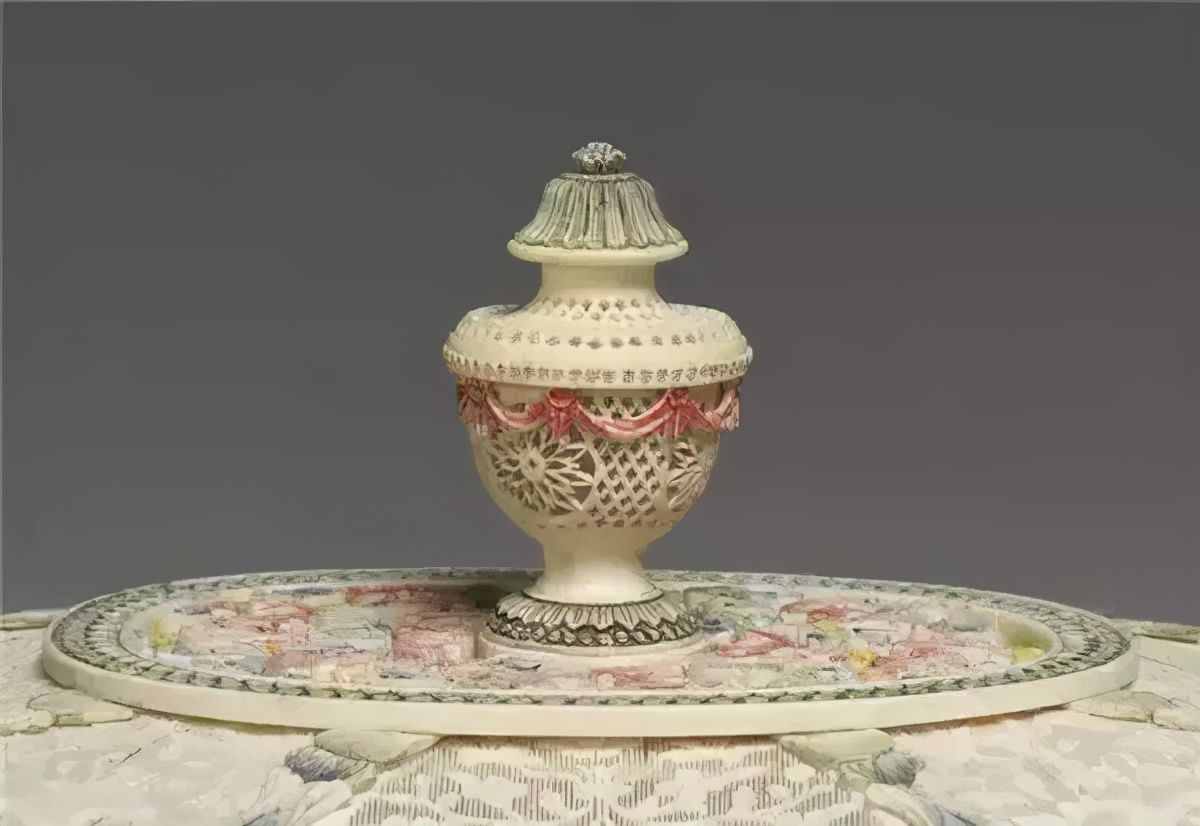
清代象牙雕人物玲珑提食盒 Carved ivory food box with figures, Qing Dynasty
捧盒的材质多为瓷、漆、木,偶有珐琅和金属,这些材料隔热、保温效果好,又因为制作工艺特殊,所以不会特别沉。
Most of these boxes were made of porcelain, lacquer, wood, occasionally enamel or metal, for thermal insulation and heat preservation purposes. They were not that heavy thanks to the peculiar workmanship.
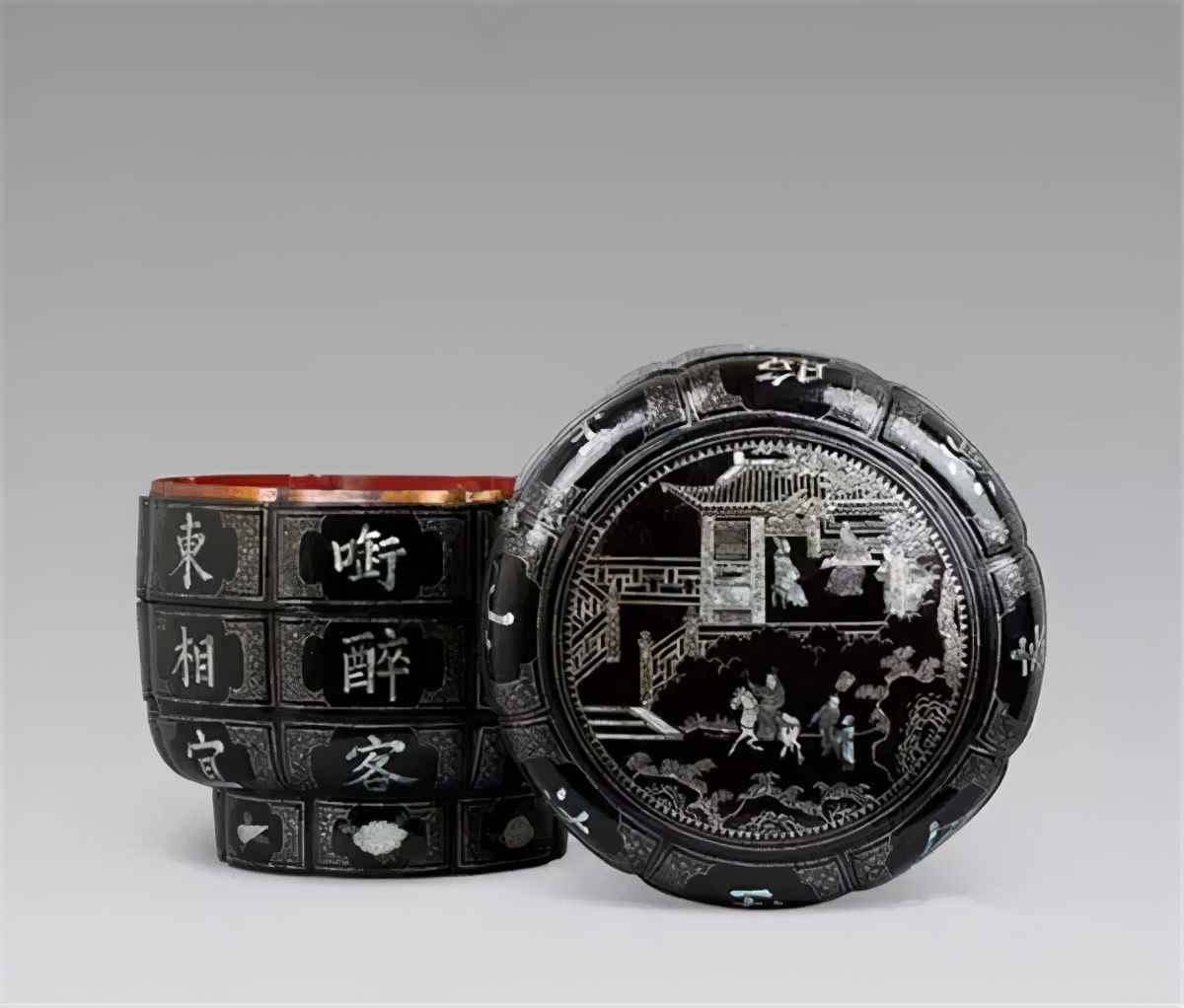
清乾隆大漆嵌螺钿三层食盒 Three-layer lacquer food box with mother-of-pearl inlay, during the reign of Emperor Qianlong in the Qing Dynasty
清代皇帝过寿,臣子献礼必须以捧盒呈送,显得十分庄重;而帝王嘉奖内侍小食,也是用捧盒盛出赐予,显得非常私密。但皇帝赏赐捧盒也未必都是好事,据民间传言,如果臣子发现皇帝给的食盒是空的,那就意味着“禄尽命绝”,只得自行了断了,跟今天影视剧中的“领便当”有异曲同工之处。
宫廷之外,清代官宦人家上菜,餐具外还要套上捧盒,这样既避免食物太烫导致端拿不便,又能保温和防止落尘。
In the Qing Dynasty, ministers and imperial kinsmen presented food boxes containing gifts to emperors on their birthdays. A food box was also used when emperors rewarded servants with snacks. But an empty box from the emperor might hint bad luck, as it meant termination of one's official career as well as an order to end one's life, according to some hearsay. In officials' mansions, when dinner was served, food boxes were also used as a dust-proof "outerwear" to keep the food warm and avoid scalds.
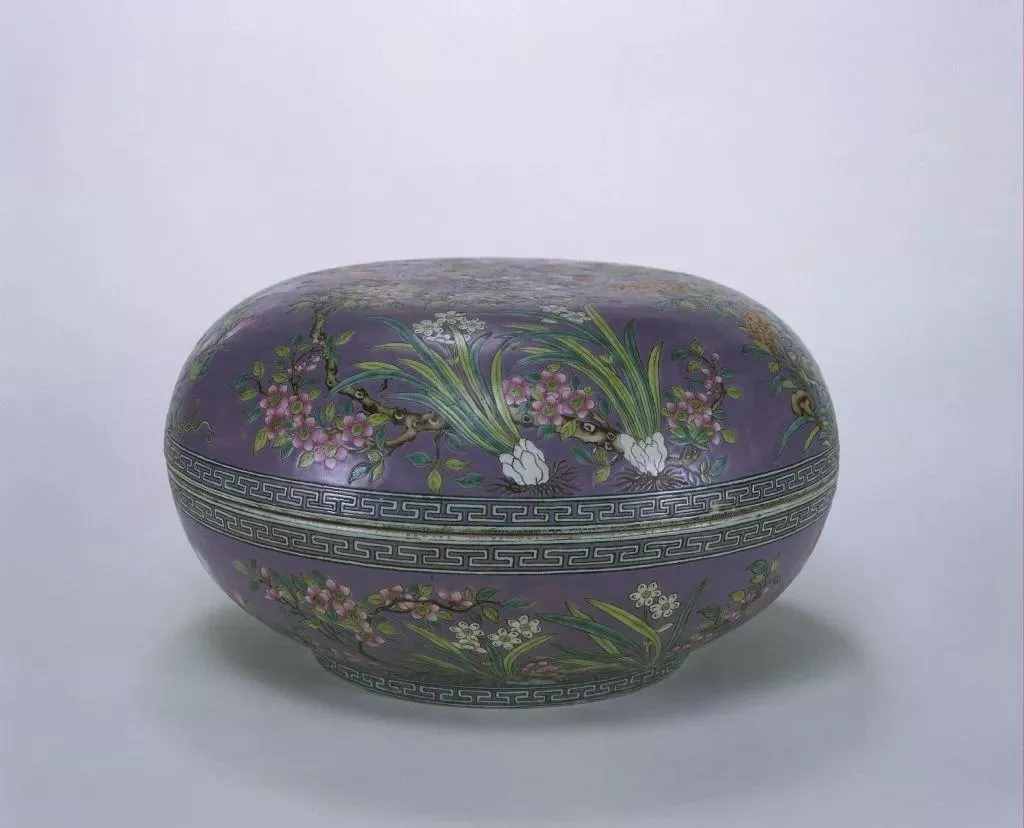
清光绪藕荷地粉彩花卉纹捧盒 Famille rose food box for holding, with patterns of pale pinkish purple flowers, during the reign of Emperor Guangxu in the Qing Dynasty
与提盒、捧盒相比,攒盒就显得比较“随意”了。它的材质以纸胎、木胎漆盒为主,特点是轻便,保温效果不是很突出,所以多用于装冷食。
Multi-grid food boxes, on the other hand, were not that intricate albeit with elaborate design. They were light with little effect of heat preservation, making them proper containers for cold food.
攒盒的“攒”字为“聚拢”之意,其内部分成许多小格子,一般是中间一格,周围再分成多格,每个格子中都有一个小盒子,十分精巧。
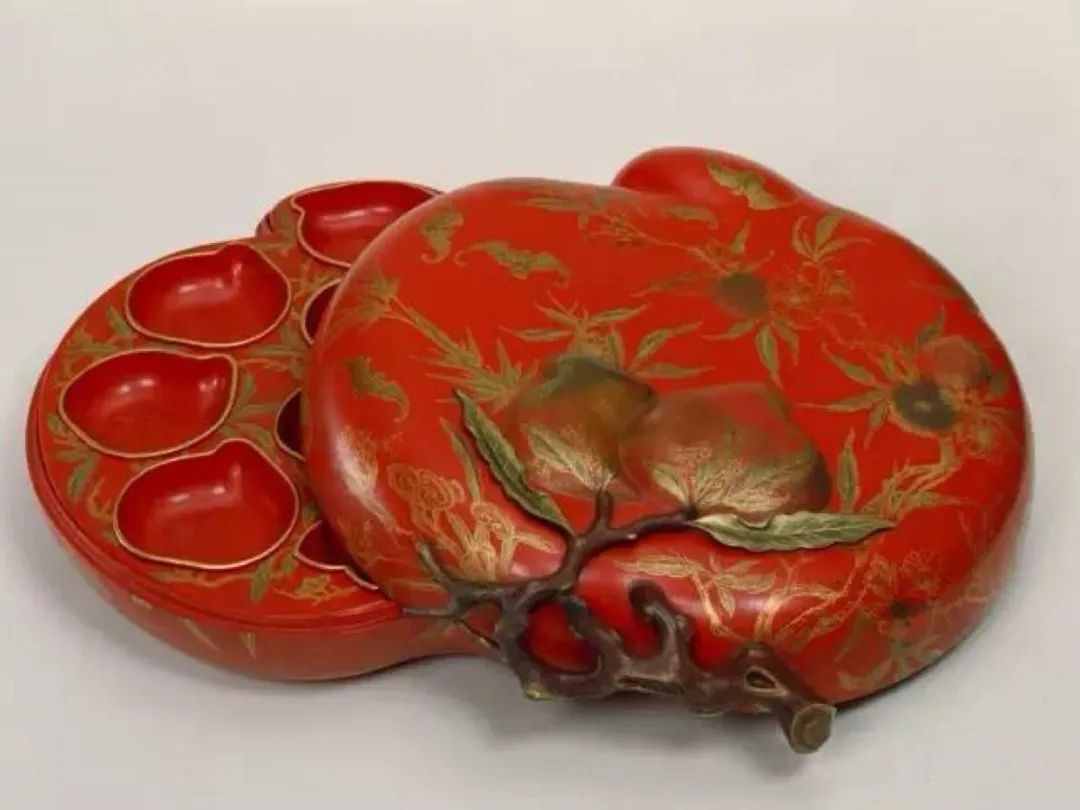
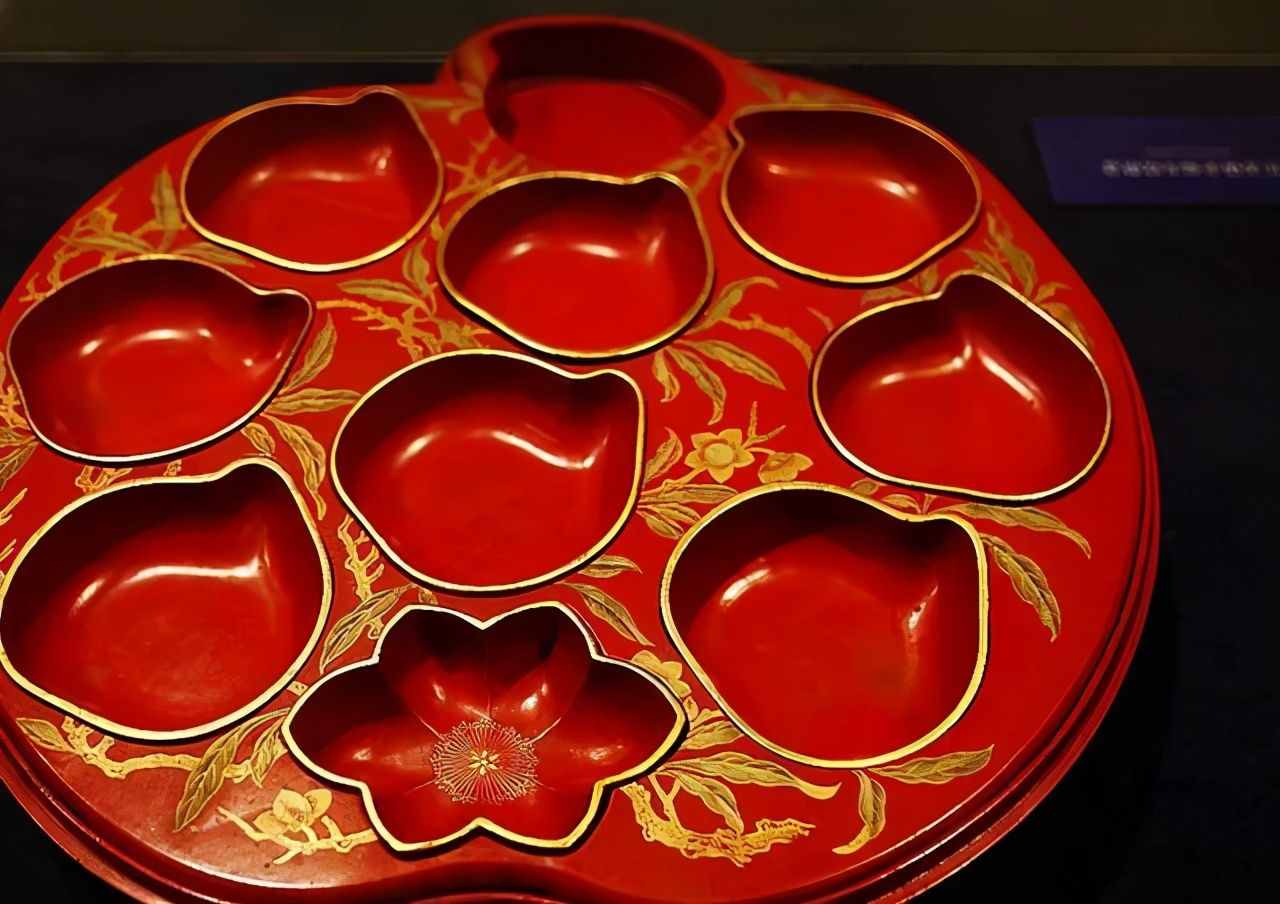
清代红漆描金福寿纹桃式攒盒 Gilt multi-grid peach-shaped food box, Qing Dynasty
现存食盒多为明清文物,其中明代食盒古朴典雅,更符合传统文人审美情趣。
Most of the existing ancient food boxes were from the Ming and Qing dynasties. And those produced in the Ming Dynasty, in particular, were more consistent with the aesthetic values of traditional literati with their simple yet elegant appearances.
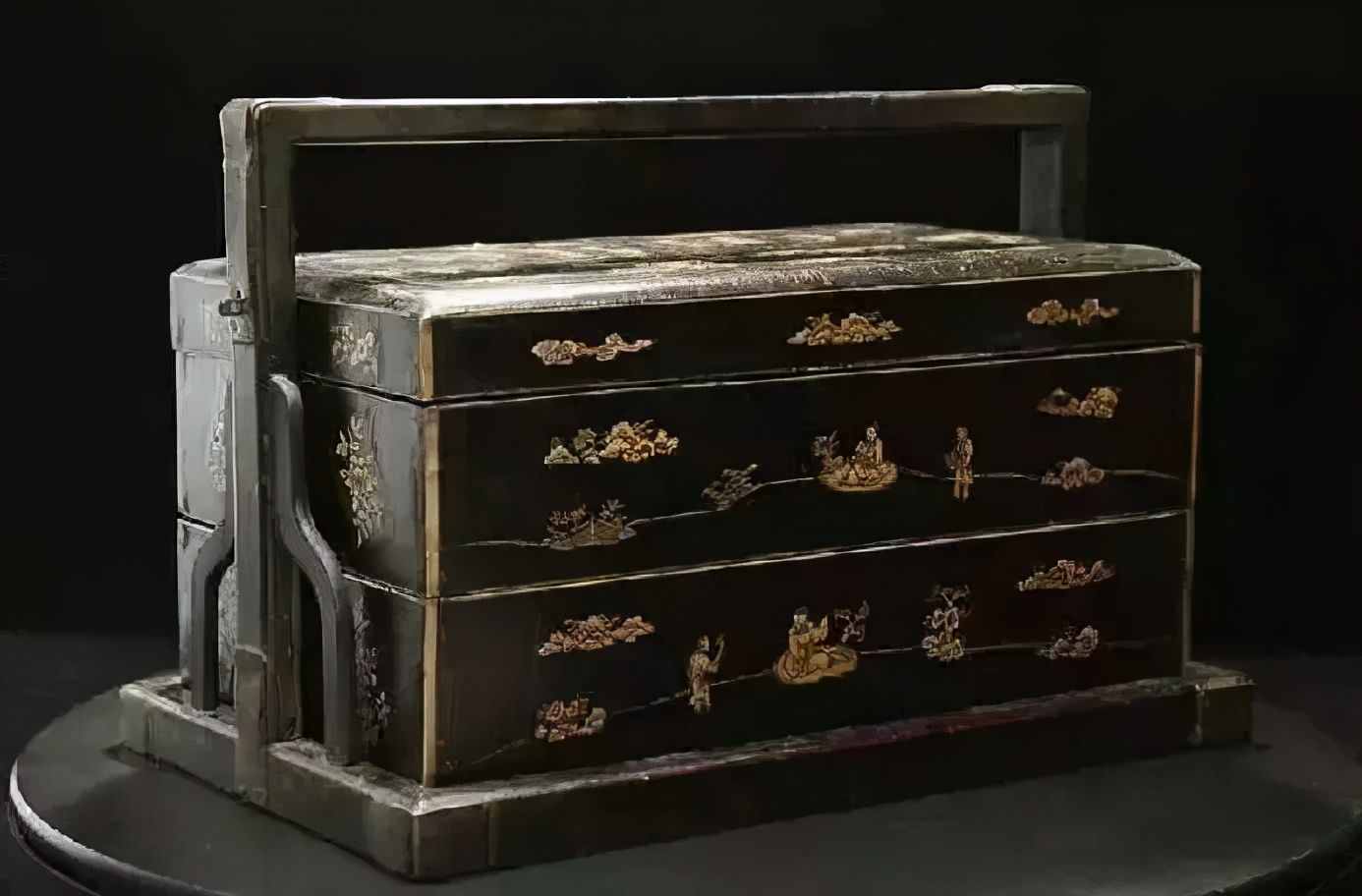
明代黑漆嵌骨三屉食盒 Three-layer black-painted food box inlaid with animal bone, Ming Dynasty
与明代食盒不同,清中期宫廷食盒以奢华昂贵著称,例如下图中这件清象牙镂雕提食盒。
该提盒分四层格子,可置放不同的食物。其雕工十分精细,主体部分用镂空精雕的象牙片,嵌于框格中,如丝毯一般。象牙片上还雕有人物、鸟、兽、庭园景物和船,盖钮、盒身框架及提手,都染有或淡蓝或红色作为点缀。
In the mid-Qing Dynasty, food containers in the imperial court were famous for their extravagance and luxury. A case in point is the carved ivory food box with handle from the Qing Dynasty presented below. The four-layer box mainly consisted of hollowly-carved ivory pieces inscribed with patterns of figures, birds, beasts, garden scenery and boats, and even its button knob, shell frame and handle had embellishments in light blue or red.
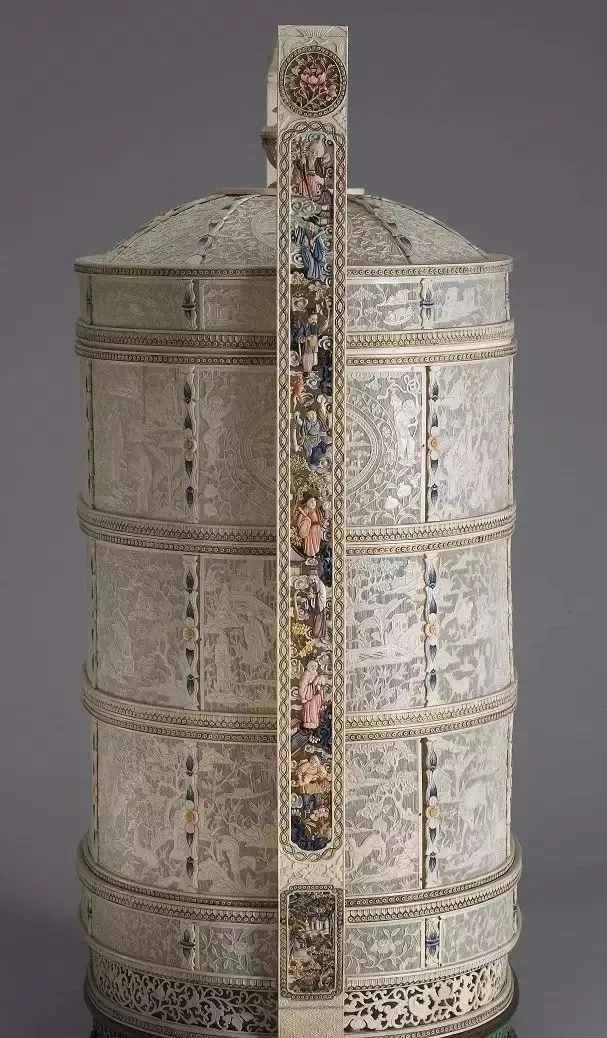
清代象牙雕四层透花提食盒,台北故宫博物院藏 Ivory-carved four-layer food box, with handle, Qing Dynasty, housed in Taipei Palace Museum
古代食盒历经千百年的发展演变,
如今依然具有生命力。
许多饭盒、礼盒在设计制作上,
继承了古代食盒的特点,
使得这一传统工艺得以延续。
Through ages of evolution, ancient food boxes are now still favored by many people. Their design and production process have been developed and applied to gift boxes today, giving the traditional craftsmanship another opportunity to shine.
Author:Liuliu
Editor:Yuan

